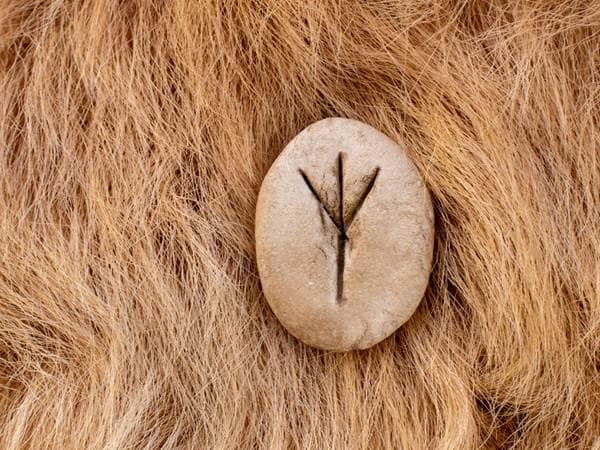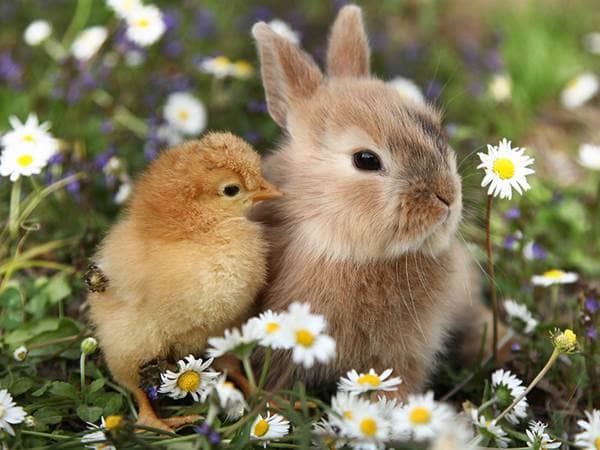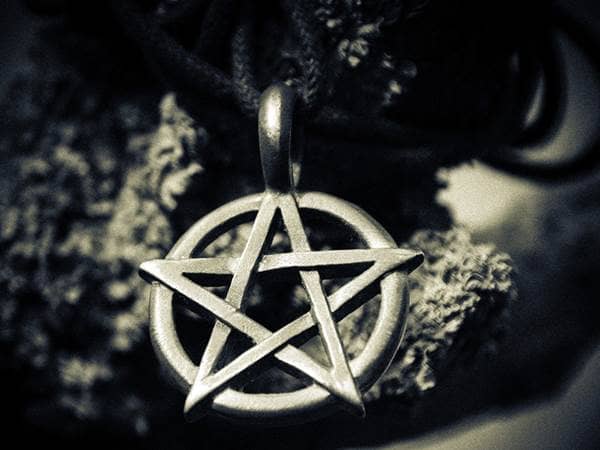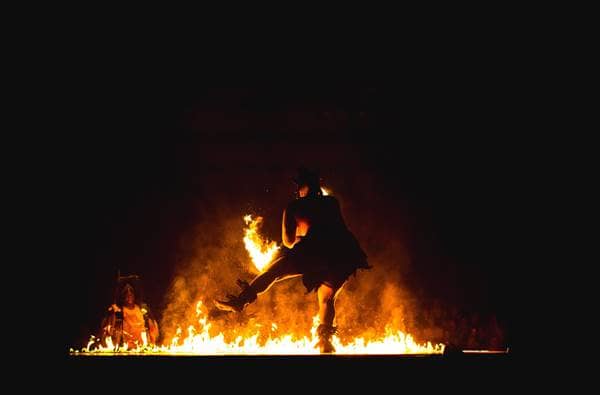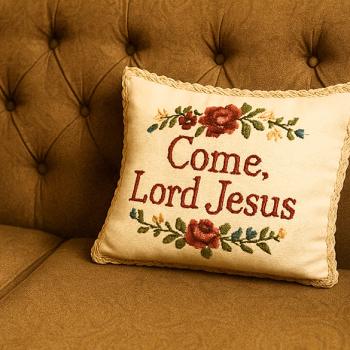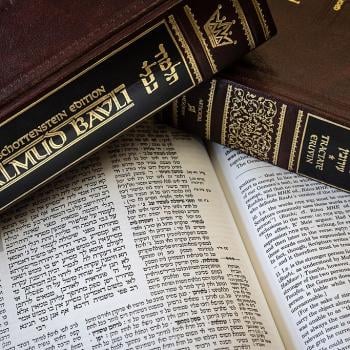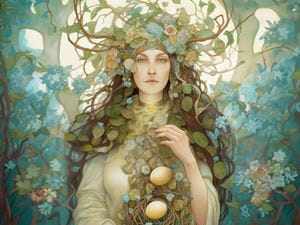
In many languages, Easter takes its name from the Jewish holiday, Passover. So, for example, in Greek and Latin Easter is called “Pascha.” In French it is “Pâques.” The Danes refer to it as “Påske,” and the Italians call it “Pasqua.” However, in English, our name for the holiday appears entirely unrelated to the word “Passover.” It is commonly claimed: “The English word Easter, which parallels the German word Ostern, is of uncertain origin. One view…was that it derived from Eostre, or Eostrae, the Anglo-Saxon goddess of spring and fertility. This view presumes…that Christians appropriated pagan names and holidays for their highest festivals.” However, this same source points out:
“Given the determination with which Christians combated all forms of paganism…, this appears a rather dubious presumption. There is now widespread consensus that the [English] word [“Easter”] derives from the Christian designation of Easter week as in albis, a Latin phrase that was understood as the plural of alba (‘dawn’) and became eostarum in Old High German, the precursor of the modern German and English term.”
In other words, contrary to popular opinion, “Easter” is most likely not drawn from the Anglo-Saxon goddess of fertility (“Eostre”) or from “Ishtar,” the Assyrian fertility goddess—as some have supposed. Rather, it appears that our English word is actually an attempt at highlighting the “dawn” of Easter morn when Christians believe that Jesus broke the bands of death and made salvation possible to all who believed.
That being said, aside from the dubious linguistic connections between Easter and Ishtar, another reason many assume that Easter is associated with a pagan fertility goddess is the fact that many of the most popular secular symbols employed during Easter celebrations have parallels with paganism’s fertility rites. So, for example, the bunnies, the eggs, the chicks, etc.; each of these popular symbols appear to be about fertility and, thus, potentially paganism.
While there are unquestionable parallels between paganism and the secular symbols of contemporary Easter commemorations, it should be remembered that the parallel symbols are not so much in the religious Christian symbolism but, instead, in the non-religious symbolism that has made its way into popular commemorations of this once solely religious holiday. And, importantly, our ability to trace the origins of those secular Easter symbols directly back to pagan roots is simply illusive.
So, rather than asking “What Pagan holiday is associated with Easter?” or “Is Easter a pagan holiday?” perhaps we should be asking, “Do the parallel symbols between paganism and Easter matter?” It is important to realize that a singular symbol can have multiple meanings, contingent upon the religion or culture employing the image or symbolic element. For example,
“there are many pagan practices that have slipped into the modern culture without most people even being aware of it. Even the wedding ring is believed to be of pagan origin but Christians who marry see no connection to pagan practices at all. Instead, the wedding ring…is a symbol of their belonging to someone else; the two becoming one. Just because pagans used these for part of their pagan attire and worship doesn’t mean that Christians see them as pagan.”
In this same vein, the hare or bunny rabbit is used as a symbol in many religions and cultures, but with very different meanings in each. So, just because a symbol carries a particular connotation in one tradition does not mean that it has the same symbolic meaning in another religion or culture. Nor does it mean that the one tradition has borrowed from the other.
One writer—pushing back on all of the supposed “pagan connections” to Easter and its most prominent symbols—noted this:
“Lambs and chicks…provide a very useful thought experiment. Why is it that people always mention 'eggs and bunnies' as 'pagan fertility symbols' but never mention the other, equally common symbols of Easter, namely fluffy yellow chicks and white lambs? The obvious answer is that fluffy yellow chicks and white lambs do not make us think of pagan fertility rites. They're too innocuous, too cute. They don't put us in mind of sex. So to harp on about 'eggs and bunnies' and ignore the other, incompatible imagery is disingenuous, focusing selectively on only those Easter images that pander to our preconceptions of pagans.
Next time you hear the 'eggs and bunnies' argument trotted out, try saying 'So fluffy chicks and white lambs make you think of sex, do they?' while stroking your chin thoughtfully. You may see some surprising results.”
In other words, those who suggest that Easter is simply a coopting of paganism by Christianity point to parallels in some of the symbolism, but they typically ignore the symbols with no pagan parallels—and most tend to ignore the fact that we have no evidence of the proposed borrowing.
Symbols ultimately represent what the person (or organization) employing them sees as their meaning for them. Regardless of how those symbols are employed in other cultures and religions—and regardless of whether one tradition borrowed from another—their symbolic meaning is determined by the person or organization employing the symbol. Consequently, many of the symbols present in paganism and secular Easter commemorations have entirely different meanings, regardless of whether there is an ancient connection between the two sets of symbols. From a Christian perspective, all that really matters (in the end) is whether the symbols employed can help the devote to think of and remember Christ during this, the most important of Christian holidays.
5/14/2024 8:24:17 PM
